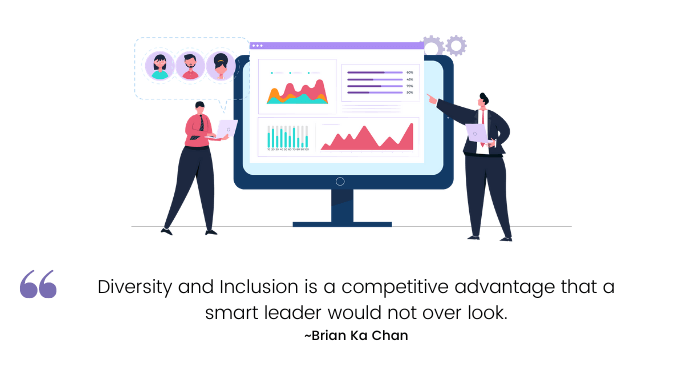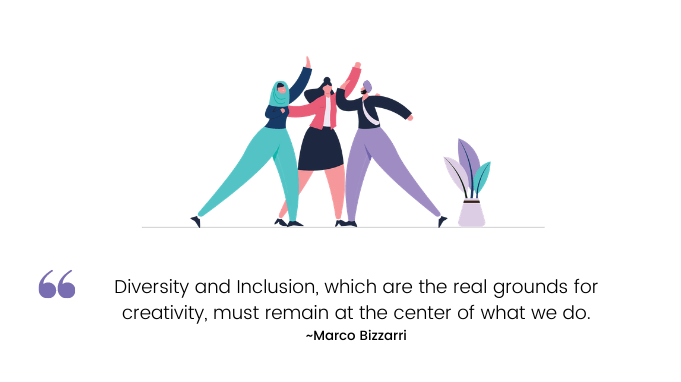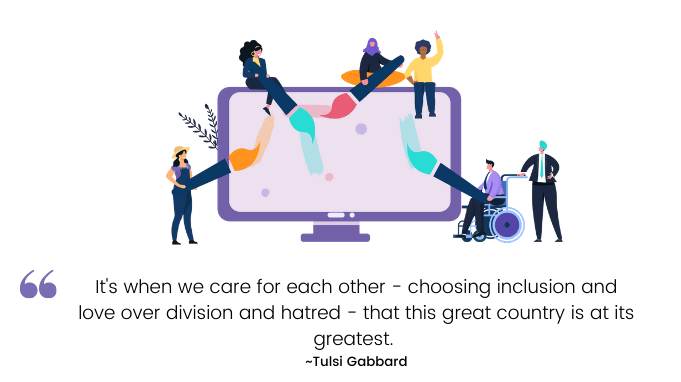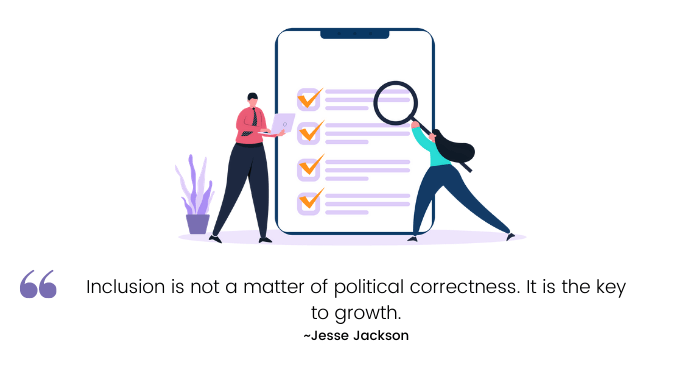Confronting Discrimination In The Workplace (For Leaders)
Discrimination, subtle or blatant, can be seen everywhere in our day-to-day lives. The workplace is no exception. However, many leaders choose to believe that discrimination in the workplace doesn't really exist.
When the leader is secular and open, shouldn't the workplace reflect their values?
The truth is not so rosy.
Discrimination can be in the little acts themselves. Sometimes, the leader of an organization can remain oblivious to the judgment that an employee might face from his colleagues, superiors, or manager.
Furthermore, when leaders are made aware of discrimination in the workplace, they are unsure how to handle it.
Should they fire the ones who are discriminating? Or should they be let off with a proper warning?
In this article, we'll try to highlight some measures that leaders can apply when confronted with a case of workplace discrimination.
This is, however, not a comprehensive list, and we highly recommend taking additional expert advice alongside these tips.
What Can Be Considered As Discrimination In The Workplace?
When an employee is denied equal opportunities, looked down upon, or singled out based on their race, national origin, gender identity, sexual orientation, age, looks, disability, or religious belief, it is considered workplace discrimination.
Examples Of Discrimination In The Workplace

Despite a precise definition, discrimination has many faces. Recently, New York issued a law against something called "hair discrimination."
This law is necessary to protect African-Americans whose natural hair is not considered "professional." This is just one of many instances of how people are treated differently, under the guise of professionalism.
Workplace discrimination occurs on numerous occasions, but not limited to:
- Being denied promotions and equal opportunities.
- Indiscrete discrimination. For example, forcing an employee to come work during a non-recognized religious holiday.
- Not being paid equally for the same job role. Most often due to sex and gender discrimination.
- Discrimination against women employees as they have to balance their work and home life.
- Dismissing people who filed a complaint against sexual harassment.
- An employee is treated differently or excluded from everyday activities.
- Hiring bias.
4 Ways Leaders Can Address Discrimination In The Workplace
As leaders, it is your responsibility to change the workplace culture to one where everyone is treated with honor and respect. It will be uncomfortable and require some effort, but it will change the future for the better.
1. Diverse Candidate Pool

Hiring bias is perhaps the most prevalent and well-known form of discrimination.
You aren’t just trying to reduce hiring bias among a selected form of applicants. You should go back to where your hiring process finds the talents themselves.
For example, are you advertising for the job position through referrals only? This will vastly limit a candidate, who has the skills but not the connections, to get the job.
The idea is not just attempting to diversify your workforce. It is to diversify your hiring process.
Adapting to a diversity-friendly hiring process means exploring new sources and mediums for recruiting. Additionally, it means letting go of the “culture fit” mentality. Lead an interview based on the skills and interests required for the job.
Secondly, ensure that the hiring team is on the same page and is aware of the new measures. It’s vital to hold them accountable for the hiring process and its criteria.
2. Abolishing Day To Day Biases

Leaders must be aware of the biases in day-to-day operations. Such biases might be unconscious, so it's harder to address them.
Here’s an example of how it happens.
According to research done by GapJumpers, women employees had a 42% less high impact project on the annual review sheet compared to male employees. As a result, it becomes hard for them to compete for career advancement or promotions.
Additionally, people with diverse identities frequently find themselves to be the victims of double standards.
A white man being assertive in a meeting will be termed passionate. But the same traits displayed by a black person or woman will be seen as being emotionally unstable. There is also classic stereotyping, such as women employees been given the task of decoration.
To address such unconscious or everyday biases, the following tips should be considered:
- Train managers and supervisors to recognize the unfair dynamics of the team. Is any employee being mistreated because of their identity? Are all the significant tasks taken up based on having a "likable personality" instead of skills?
- Ensure a policy about interruptions. In a meeting, do a particular person keep talking over others? It’s essential to take them aside and make them aware of listening to others’ ideas and thoughts.
- Similarly, when you see the credit of a particular person or minority being given to someone else, call it out. Ensure that everyone gets due credit for their jobs.
- Ensure participation. Minorities in a social setting tend to quieten down and not voice their opinions. Counter it by inviting them to lead a meeting or pitch a fresh idea.
- Access to the boss or leader is something that not everyone is given to. If you only hold conversations with a select few employees that need to change. It doesn't mean that you have to hold court with everyone every day. Instead, make sure that the access to you is driven by business and team needs instead of individual ones.
3. Rewarding Performance. Eliminating Favoritism.

As a leader, you must be able to set favoritism aside and reward people for performance. Mainly it involves being fair with performance reviews, bonuses, pay, and promotions.
PayScale found that men of color were 25% less likely than their white peers to get a raise when they asked for one. Additionally, when women and men start their careers on the same rung of the professional ladder, by the time they are halfway (aged 30–44), 47% of men are managers or higher, but only 40% of women are.
Leaders can avoid these pitfalls in the workplace by following these steps:
- During a performance review, stick to addressing skills instead of behaviors.
- Mainly because men are more likely to be rated on their outcomes while women are judged on personality.
- The same standards of evaluation must be maintained for everyone. The review should be specific and have supporting data behind it. Ideally, a third party should understand the rating and its reasoning.
- For promotion and pay decisions, outline the criteria for success and which employees meet the requirements. By doing so, you'd be selecting people based on competency instead of indulging in favoritism.
4. Appoint An Diversity Panel

Perhaps, the most critical measure is tasking a diversity panel in your organization.
It's essential because not only will it provide a voice for the oppressed, but it will help you create, regulate, and implement the organizational diversity policies.
Here’s how appointing a diversity task force the ultimate action against discrimination in the workplace:
- Promotes accountability. Departments or teams will be required to answer how they are helping to make the company more inclusive.
- Will be able to recognize better the signs of discrimination and biases.
- Monitor and address discrimination acts in the workplace, including sexual harassment.
Related Article: A Definitive Guide on Diversity and Inclusion in the Workplace
Some Major US Discrimination Laws

The rights of the US workplace are enforced by the Equal Employment Opportunity Commission- EEOC.
Title VII of the Civil Rights Act of 1964
Forbids employee discrimination based on race, color, religion, sex, or national origin.
Age Discrimination in Employment Act of 1967 (ADEA)
The Age Discrimination in Employment Act defends people who are age 40 and older from employment discrimination based on age.
Equal Pay Act of 1963 (EPA)
The Equal Pay Act protects men and women who perform equal work from wage discrimination based on sex.
Pregnancy Discrimination Act of 1978
This law makes it illegal to segregate against a woman due to pregnancy or childbirth. For example, you can't fire a woman if she gets pregnant.
Americans with Disabilities Act (ADA)
The Americans with Disabilities Act prohibits discrimination against people with disabilities in several areas, including employment, transportation, public accommodations, communications, and access to state and local government' programs and services.
Conclusion
Discrimination in the workplace is a widespread occurrence in most organizations around the world. As a leader, you must put a stop to such actions, if not outright prevent them.


















